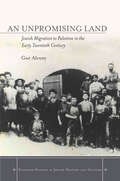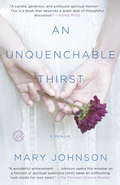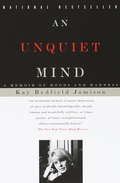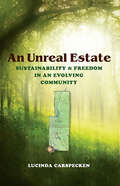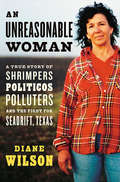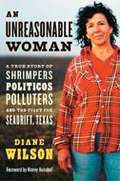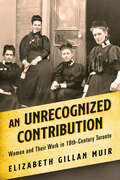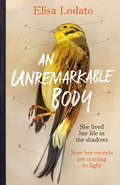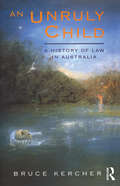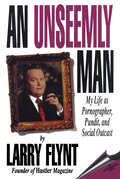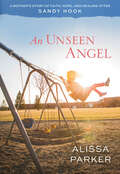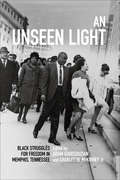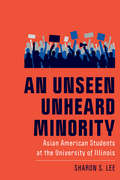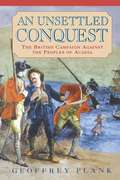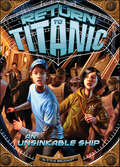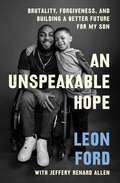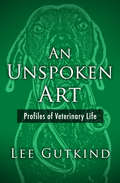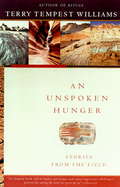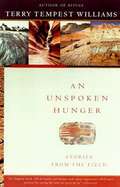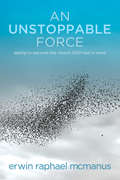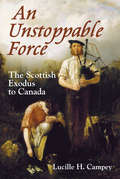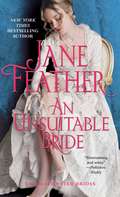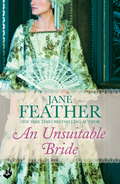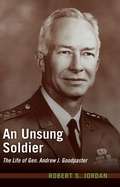- Table View
- List View
An Unpromising Land: Jewish Migration to Palestine in the Early Twentieth Century
by Gur AlroeyThe Jewish migration at the end of the nineteenth and beginning of the twentieth centuries was one of the dramatic events that changed the Jewish people in modern times. Millions of Jews sought to escape the distressful conditions of their lives in Eastern Europe and find a better future for themselves and their families overseas. The vast majority of the Jewish migrants went to the United States, and others, in smaller numbers, reached Argentina, Canada, Australia, and South Africa. From the beginning of the twentieth century until the First World War, about 35,000 Jews reached Palestine. Because of this difference in scale and because of the place the land of Israel possesses in Jewish thought, historians and social scientists have tended to apply different criteria to immigration, stressing the uniqueness of Jewish immigration to Palestine and the importance of the Zionist ideology as a central factor in that immigration. This book questions this assumption, and presents a more complex picture both of the causes of immigration to Palestine and of the mass of immigrants who reached the port of Jaffa in the years 1904#150;1914.
An Unquenchable Thirst: A Memoir
by Mary JohnsonAn unforgettable spiritual autobiography about a search for meaning that begins alongside one of the great religious icons of our time and ends with a return to the secular world At seventeen, Mary Johnson saw Mother Teresa's face on the cover of Time and experienced her calling. Eighteen months later, she entered a convent in the South Bronx to begin her religious training. Not without difficulty, this bright, independent-minded Texas teenager eventually adapted to the sisters' austere life of poverty and devotion, and in time became close to Mother Teresa herself. Still, beneath the white and blue sari beat the heart of an ordinary young woman facing the struggles we all share--the desire for love and connection, meaning and identity. During her twenty years with the Missionaries of Charity, Sister Donata, as she was known, grappled with her faith, her sexuality, the politics of the order, and her complicated relationship with Mother Teresa. Eventually, she left the church to find her own path--one that led to love and herself.Provocative, profound, and emotionally charged, An Unquenchable Thirst presents a rare, privileged view of Mother Teresa. At the same time, it is a unique and magnificent memoir of self-discovery.From the Hardcover edition.
An Unquiet Mind: A Memoir of Moods and Madness (Picador Classic Ser. #4)
by Kay Redfield JamisonWITH A NEW PREFACE BY THE AUTHOR <P><P>In her bestselling classic, An Unquiet Mind, Kay Redfield Jamison changed the way we think about moods and madness. <P><P>Dr. Jamison is one of the foremost authorities on manic-depressive (bipolar) illness; she has also experienced it firsthand. For even while she was pursuing her career in academic medicine, Jamison found herself succumbing to the same exhilarating highs and catastrophic depressions that afflicted many of her patients, as her disorder launched her into ruinous spending sprees, episodes of violence, and an attempted suicide. <P><P>Here Jamison examines bipolar illness from the dual perspectives of the healer and the healed, revealing both its terrors and the cruel allure that at times prompted her to resist taking medication. An Unquiet Mind is a memoir of enormous candor, vividness, and wisdom--a deeply powerful book that has both transformed and saved lives.
An Unreal Estate: Sustainability & Freedom in an Evolving Community
by Lucinda CarspeckenIn An Unreal Estate, Lucinda Carspecken takes an in-depth look at Lothlorien, a Southern Indiana nature sanctuary, sustainable camping ground, festival site, collective residence, and experiment in ecological building, stewardship, and organization. Carspecken notes the way fiction and reality intertwine on this piece of land and argues that examples such as Lothlorien have the power to be a force for social change. Lothlorien's organization and social norms are in sharp contrast with its surrounding communities. As a unique enclave within a larger society, it offers to the latter both an implicit critique and a cluster of alternative values and lifestyles. In addition, it has created a niche where some participants change, grow, and find empowerment in an environment that is accepting of difference—particularly in areas of religion and sexual orientation.
An Unreasonable Woman
by Diane WilsonWhen Diane Wilson, fourth-generation shrimp-boat captain and mother of five, learns that she lives in the most polluted county in the United States, she decides to fight back. She launches a campaign against a multibillion-dollar corporation that has been covering up spills, silencing workers, flouting the EPA, and dumping lethal ethylene dichloride and vinyl chloride into the bays along her beloved Texas Gulf Coast. In an epic tale of bravery, Wilson takes her fight to the courts, to the gates of the chemical plant, and to the halls of power in Austin. Along the way she meets with scorn, bribery, character assassination, and death threats. Finally Wilson realizes that she must break the law to win justice: She resorts to nonviolent disobedience, direct action, and hunger strikes. Wilson's vivid South Texas dialogue resides somewhere between Alice Walker and William Faulkner, and her dazzling prose brings to mind the magic realism of Gabriel Garcia Marquez, replete with dreams and prophecies.
An Unreasonable Woman: A True Story of Shrimpers, Políticos, Polluters, and the Fight for Seadrift, Texas
by Diane WilsonFor her activism on behalf of Texas Gulf Coast bays, Wilson has been recognized with awards including Mother Jones' Hellraiser of the Month. In her first book, this fourth-generation shrimper relates her battles against a plastics company (and their political allies) whose dumping of toxic chemicals resulted in her county's designation as the nation's most polluted in the late 1980s. Annotation ©2005 Book News, Inc., Portland, OR (booknews.com)
An Unrecognized Contribution: Women and Their Work in 19th-Century Toronto
by Elizabeth Gillan MuirA treasure trove of incredible lives lived.— RICK MERCER, comedian and authorMuir sets out to restore the faces of women who worked and struggled in nineteenth-century Toronto. A fascinating read.— WARREN CLEMENTS, author and publisherEmphasizes the enormously influential role women had in laying the groundwork for life in the city today.— DR. ROSE A. DYSON, author of Mind Abuse: Media Violence and Its Threat to DemocracyWomen in nineteenth-century Toronto were integral to the life of the growing city. They contributed to the city’s commerce and were owners of stores, factories, brickyards, market gardens, hotels, and taverns; as musicians, painters, and writers, they were a large part of the city’s cultural life; and as nurses, doctors, religious workers, and activists, they strengthened the city’s safety net for those who were most in need.Their stories are told in this wide-ranging collection of biographies, the result of Muir’s research on early street directories and city histories, personal diaries, and other historical works. Muir references over four hundred women, many of whom are discussed in detail, and describes the work they undertook during a period of great change for Toronto.
An Unremarkable Body
by Elisa LodatoWhen Katharine is found dead at the foot of her stairs, it is the mystery of her life which consumes daughter, Laura.
An Unruly Child: A history of law in Australia
by Bruce Kercher'This is a provocative re-examination of our legal history appearing at a time when Australians are reconsidering both their past and their future.' - The Hon. Justice Michael Kirby AC CMG, President of the New South Wales Court of AppealThe imperial view of Australian law was that it was a weak derivative of English law. In An Unruly Child, Bruce Kercher rewrites history. He reveals that since 1788 there has been a contest between the received legal wisdom of Mother England and her sometimes unruly offspring. The resulting law often suited local interests, but was not always more just.Kercher also shows that law has played a major role in Australian social history. From the convict settlements and the Eureka stockade in the early years to the Harvester Judgement, the White Australia Policy and most recently the Mabo case, central themes of Australian history have been framed by the legal system.An Unruly Child is a groundbreaking work which will influence our understanding of Australia's history and its legal system.
An Unruly World?: Globalization, Governance and Geography
by Susan M. Roberts Andrew Herod Gearóid Ó TuathailAn Unruly World explores the diverse conundrums thrown up by seemingly unruly globalization. Examining how fast transnational capitalism is re-making the rules of the game, in a wide variety of different places, domains, and sectors, the authors focus on a wide range of issues: from analysis of 'soft capitalism', and the post-Cold War organizational drives of international trade unions, to the clamour of states to reinvent welfare policy, and the efforts of citizen groups to challenge trade and financial regimes. An Unruly World argues that we are not living in a world bereft of rules and rulers; the rules governing the global economy today are more strictly enforced by international organizations and rhetoric than ever before.
An Unseemly Man: My Life as Pornographer, Pundit, and Social Outcast
by Larry FlyntControversial and outspoken, hated and adored, the infamous life of Larry Flynt needs no exaggeration to make it one of the most interesting stories of our time. The real events of Flynt's life are captured here—from his roots in Appalachia to the founding of Hustler magazine, from the shooting that left him confined to a wheelchair to his legal battles and First Amendment advocacy.
An Unseen Angel: A Mother's Story of Faith, Hope, and Healing after Sandy Hook
by Alissa ParkerWhen Alissa Parker lost her daughter Emilie in the Sandy Hook Elementary mass shooting, she started a life-changing journey to answer soul-searching questions about faith, hope, and healing. As she sought for the peace and comfort that could help mend her broken heart, she learned, step by step, how to open her heart to God's Grace and will. <P><P> One step brought her face to face with the shooter's father, where in a pivotal and poignant meeting, she was given an opportunity to forgive. Another step brought her into the sheltering compassion of her community as family, friends, and even strangers reached out to buoy her up with their shared faith. And several miraculous manifestations of Emilie's continued presence and influence lifted her heart and will validate the faith of every Christian.
An Unseen Light: Black Struggles for Freedom in Memphis, Tennessee (Civil Rights and the Struggle for Black Equality in the Twentieth Century)
by Aram Goudsouzian and Charles W. McKinneyScholars examine the activist efforts of Black Americans in Memphis in a series of essays ranging from the Reconstruction era to the twenty-first century.In An Unseen Light: Black Struggles for Freedom in Memphis, Tennessee, eminent and rising scholars present a multidisciplinary examination of African American activism in Memphis from the dawn of emancipation to the twenty-first century. Together, they investigate episodes such as the 1940 “Reign of Terror” when Black Memphians experienced a prolonged campaign of harassment, mass arrests, and violence at the hands of police. They also examine topics including the relationship between the labor and civil rights movements, the fight for economic advancement in Black communities, and the impact of music on the city’s culture. Covering subjects as diverse as politics, sports, music, activism, and religion, An Unseen Light illuminates Memphis’s place in the long history of the struggle for African American freedom and human dignity.Praise for Unseen Light“From the aftermath of the post-Civil War race massacre to continuous violence, murder, and bitter confrontations into the twenty-first century, contributors illuminate An Unseen Light on those Black Memphians forging lives nonetheless, through negotiation, protest, music, accommodation, prayer, faith and sometimes sheer stubbornness . . . . Scholars intellectually and personally invested in the city as a site of family and community, and career, bring an unequivocal depth of understanding and richness about place and belonging that textures the pages with life, from the church pews, the music studios, or the myriad of social or political organizations, to the land itself, adding more layers to underscore how black lives have mattered in the historical grassroots building of the nation. This is thoughtful and beautiful work.” —Françoise Hamlin, author of Crossroads at Clarksdale: The Black Freedom Struggle After World War II“This rich collection covers a broad range of topics pertaining to the African American freedom struggle in Memphis, Tennessee. One of its greatest strengths is the breadth of the essays, which span a long period from the end of the Civil War to the twenty-first century. An Unseen Light is a valuable addition to civil rights scholarship.” —Cynthia Griggs Fleming, author of Yes We Did?: From King's Dream to Obama's Promise“The collection did an excellent job in explaining the inner workings of Memphis . . . . The works highlighted the past actions, organizing and insurgency which created the dynamics of racism, classism, social, and political power seen in modern Memphis. I recommend this collection to those interested in the shaping of a large southern city. I also recommend to new and lifelong Memphians to provide a blueprint of the historical legacy of Memphis and how this legacy continues to impact the lives of African Americans.” —Tennessee Libraries
An Unseen Unheard Minority: Asian American Students at the University of Illinois (New Directions in the History of Education)
by Sharon S. LeeHigher education hails Asian American students as model minorities who face no educational barriers given their purported cultural values of hard work and political passivity. Described as “over-represented,” Asian Americans have been overlooked in discussions about diversity; however, racial hostility continues to affect Asian American students, and they have actively challenged their invisibility in minority student discussions. This study details the history of Asian American student activism at the University of Illinois Urbana-Champaign, as students rejected the university’s definition of minority student needs that relied on a model minority myth, measures of under-representation, and a Black-White racial model, concepts that made them an “unseen unheard minority.” This activism led to the creation on campus of one of the largest Asian American Studies programs and Asian American cultural centers in the Midwest. Their histories reveal the limitations of understanding minority student needs solely along measures of under-representation and the realities of race for Asian American college students.
An Unsettled Conquest: The British Campaign Against the Peoples of Acadia (Early American Studies)
by Geoffrey PlankThe former French colony of Acadia—permanently renamed Nova Scotia by the British when they began an ambitious occupation of the territory in 1710—witnessed one of the bitterest struggles in the British empire. Whereas in its other North American colonies Britain assumed it could garner the sympathies of fellow Europeans against the native peoples, in Nova Scotia nothing was further from the truth. The Mi'kmaq, the native local population, and the Acadians, descendants of the original French settlers, had coexisted for more than a hundred years prior to the British conquest, and their friendships, family ties, common Catholic religion, and commercial relationships proved resistant to British-enforced change. Unable to seize satisfactory political control over the region, despite numerous efforts at separating the Acadians and Mi'kmaq, the authorities took drastic steps in the 1750s, forcibly deporting the Acadians to other British colonies and systematically decimating the remaining native population.The story of the removal of the Acadians, some of whose descendants are the Cajuns of Louisiana, and the subsequent oppression of the Mi'kmaq has never been completely told. In this first comprehensive history of the events leading up to the ultimate break-up of Nova Scotian society, Geoffrey Plank skillfully unravels the complex relationships of all of the groups involved, establishing the strong bonds between the Mi'kmaq and Acadians as well as the frustration of the British administrators that led to the Acadian removal, culminating in one of the most infamous events in North American history.
An Unsinkable Ship
by Steve BrezenoffAfter Tucker and Maya are jolted back to the present by Titanic's iceberg collision, they don't know what will happen to their new friend, Liam, who is still trapped onboard. They travel back to 1912 again to make sure Liam and his parents, all third-class passengers, make it to the lifeboats in time. But none of the passengers seem to realize the severity of the situation. Tucker and Maya must convince everyone that the unsinkable ship is sinking, and find Liam, before it's too late.
An Unspeakable Hope: Brutality, Forgiveness, and Building a Better Future for My Son
by Leon FordA &“powerful and insightful&” (Cyntoia Brown-Long, author of Free Cyntoia) memoir in the vein of Just Mercy and The Sum of Us that upends our understanding about the future of policing in the United States and explores how we can begin healing from systemic injustice.In 2012, nineteen-year-old Leon Ford was shot five times by a Pittsburgh police officer during a racially charged traffic stop stemming from a case of mistaken identity. When he woke up in the hospital, he was faced with two life-changing realities: he was a new father, and he was paralyzed from the waist down. Leon found the only way to move forward was to let go of his bitterness and learn to practice forgiveness. Now, in this memoir and manifesto, Leon illustrates how this harrowing experience has inspired a deep reckoning with the issues his community is facing, not only with police brutality, but also an epidemic of street violence, toxic masculinity and its impact on Black fatherhood, and the lack of disability rights and mental health access in disenfranchised communities. In the wake of countless similar shootings across the country, Leon details how he turned towards social activism, dedicating himself to bridging the gap between the police and the communities they are supposed to serve. With a voice filled with &“healing, triumph, and resilience&” (Shaka Senghor, bestselling author of Writing My Wrongs), Ford offers fresh, counterintuitive ways we can effect social change. Leon shows us how, together, we can move away from retribution and towards transformative justice in order to end police brutality and heal as a country. As he once said, &“Lead with love. Start compassionate conversations even with individuals and systems that have caused you pain. I know from experience that you can make your pain purposeful.&”
An Unspoken Art: Profiles of Veterinary Life
by Lee GutkindIn the tradition of James Herriot&’s All Creatures Great and Small, An Unspoken Art is Lee Gutkind&’s captivating look at the lives of veterinarians, from the zoos to the farmLee Gutkind, the godfather of creative nonfiction, explores with warmth and sincerity the worlds of modern-day veterinarians—from practitioners operating on Manhattan&’s Upper East Side to those working knee deep in mud in the English countryside. Gutkind profiles the men and women who have devoted their lives to the care of animals, almost all treating their patients with more humanity and compassion than physicians in human hospitals do. He writes of the people who do not bat an eye at sharing a bed with their dogs, and of those who spare no expense when it comes to the well-being of their pets.An Unspoken Art is an insightful look at the individuals who dedicate themselves to the care of creatures, and of the enduring bond between people and animals.
An Unspoken Hunger
by Terry Tempest WilliamsWilliams weaves her observations in the naturalist field and her personal experience--as a woman, a Westerner, and a Mormon--into a resonant manifesto on behalf of the landscapes she loves, making clear as well that, through our disregard of this world, we have lost an essential connection to our deepest selves.
An Unspoken Hunger: Stories from the Field
by Terry Tempest WilliamsWilliams weaves her observations in the naturalist field and her personal experience--as a woman, a Westerner, and a Mormon--into a resonant manifesto on behalf of the landscapes she loves, making clear as well that, through our disregard of this world, we have lost an essential connection to our deepest selves.
An Unstoppable Force
by Erwin Raphael McmanusAs the world around us changes at record-speed, An Unstoppable Force imagines a church that embraces change by remaining fully committed to its apostolic calling. Church leaders will discover new ways of engaging communities through vibrant, relevant ministries and clear, innovative communication. An Unstoppable Force challenges churches to cast aside methods that are broken or atrophied and embrace the future of the Church with vigor. McManus's prophetic voice outlines a church that is not a refuge from the world, but a refuge to the world. Christians on the forefront of the church movement must be ready to let go of the past and move forward.
An Unstoppable Force: The Scottish Exodus to Canada
by Lucille H. CampeyThis book provides the first exhaustive study of the great Scottish exodus to Canada written in modern times. Using wide-ranging sources, some previously untapped, Lucille Campey examines the driving forces behind the Scottish exodus and traces the remarkable progress of Scottish colonizers across Canada. Mythology and truth are considered side by side as their story unfolds. Scots had a profound impact on Canada and shaped the course of its history. This book is essential reading for those who wish to understand why they came and the enormity of their achievements in Canada.
An Unsuitable Bride
by Jane FeatherLong ago, young Viscount Bradley's prudish family forbade him to marry his beloved. Now, the aging lord has plotted a subtle revenge. His three nephews can split his fortune, but only if each marries a fallen woman. Two have found brides who meet the terms . . . and all depends on the youngest, Peregrine Sullivan. New York Times bestselling author Jane Feather's Georgian trilogy concludes with a sexy tale sure to delight. Only desperation would drive a lady to disguise herself in hopes of employment, but the twenty thousand pounds that their father promised beautiful Alexandra Douglas and her invalid younger sister has vanished into the hands of the greedy cousin who inherited the estate. Alexandra, in search of justice, embarks on an elaborate charade to infiltrate Combe Abbey, her ancestral home, and secretly take the money back. Peregrine, visiting the Abbey, is intrigued by a woman whose mind matches his on every level. Who is this middle-aged spinster with a young woman's eyes and a youthful step that even a limp cannot disguise? Sensing some scandalous secret, Perry assumes the lady would delight in being rescued. But his efforts are rebuffed; Alexandra will take care of herself and her sister, thank you very much. Can Perry court the daring and independent young woman, win her heart, and be the last brother to wed?
An Unsuitable Bride: Blackwater Brides Book 3 (Blackwater Brides Series)
by Jane FeatherIf you love Poldark, you'll love Jane Feather's dazzling Georgian romantic trilogy, the Blackwater Brides, which concludes with An Unsuitable Bride.Perfect for fans of Eloisa James, Liz Carlyle and Stephanie Laurens.Only desperation would drive a lady to disguise herself in hopes of employment, but the twenty thousand pounds that their father promised beautiful Alexandra Douglas and her invalid younger sister has vanished into the hands of the greedy cousin who inherited the estate. Alexandra, in search of justice, embarks on an elaborate charade to infiltrate Combe Abbey, her ancestral home, and secretly take the money back. Peregrine, visiting the Abbey, is intrigued by a woman whose mind matches his on every level. Who is this middle-aged spinster with a young woman's eyes and a youthful step that even a limp cannot disguise? Sensing some scandalous secret, Perry assumes the lady would delight in being rescued. But his efforts are rebuffed; Alexandra will take care of herself and her sister, thank you very much. Can Perry court the daring and independent young woman, win her heart, and be the last brother to wed?Follow the stories of Perry's dashing brothers in Rushed to the Altar and A Wedding Wager, or check out Jane Feather's tantalising spy versus counterspy tale in Twelfth Night Secrets.
An Unsung Soldier
by Robert S. JordanGen. Andrew J. Goodpaster was one of the leading soldier-scholars of his time. He was one of the key figures during the Cold War - one who stood among the dominant American military and political personalities of those times. Goodpaster served Gen. Dwight Eisenhower in establishing the international military component of NATO and then served as his Staff Secretary. He achieved the highest international military command assignment possible - as NATO's Supreme Allied Commander, Europe and restored the integrity of West Point during a major ethical crisis. Upon his final retirement and for over a quarter-century thereafter, he was actively involved both the formal and informal world of Washington policy-making, making his mark repeatedly as a respected participant.
